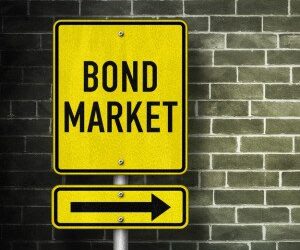The Australian economy is entering 2000 firing on all cylinders. The unemployment rate is at 9½ year lows, building approvals are at 5 year highs, housing finance commitments are at all-time highs and annual growth of retail spending is the strongest in 4 years
The Australian economy is entering 2000 firing on all cylinders. The unemployment rate is at 9½ year lows, building approvals are at 5 year highs, housing finance commitments are at all-time highs and annual growth of retail spending is the strongest in 4 years. Overall, we expect the economy to be recording ‘4 point something’ annual growth rates over most of 2000 – above the long-term average growth rate of around 3.5%.
Added to this picture is recovery in previous lagging areas. Mining had been one of the sectors hardest hit by the slowdown in global growth and weakness in commodity prices over 1998. However, the ‘V-shaped’ recovery in Asia has already led to firmer metal prices. Further strengthening in global growth should continue to support operating conditions for miners over 2000. The mining sector actually reported stronger investment spending in the September quarter for the first time since March quarter 1998.
Another previously lagging sector, manufacturing, has seen conditions improve markedly . In the December quarter, key indicators such as production, sales and profitability were at 5 year highs and optimism is expressed about conditions in March quarter 2000.
A strong domestic economy in combination with firmer global growth is a powerful mix. We have not seen this synchronisation between domestic and global economies for at least 5 years, arguably longer. This poses both risks and opportunities when assessing the investment picture in the coming year. And if this is not enough to contend with, domestically we have factors such as GST, business tax reform and the Olympics complicating the timing of economic growth.
With such a broad range of influences, it is hard to know where to start when assessing the investment outlook in 2000. However, given that interest rates will dominate attention early in 2000, that is an appropriate place to start.
In November 1999, the Reserve Bank tightened monetary policy for the first time in almost 5 years. The small quarter percent rate hike was probably more important in psychological terms, signalling that a tightening phase had begun. With an absence of braking forces acting on the economy, cash rates are expected to be increased a number of times in the first half of 2000. We expect the cash rate to be lifted from 5% to around 5.5-5.75%. However, the main risk is that interest rates may be raised by more than currently assumed.
While the Reserve Bank will have to constrain the momentum of the economy in early 2000, it cannot afford to be too heavy-footed on the brakes. Post GST and post-Olympics, a marked softening is likely in construction. Further, consumer demand is expected to soften late in the year after the spurt of post-GST spending is exhausted.
It will be a delicate balancing act for the Reserve Bank over 2000 – constraining growth and inflationary forces in the first half of 2000, but seeking not to deepen any slowdown later in the year.
The GST is certainly a focal point for policymakers. The Reserve Bank is working on the assumption that the GST has no lasting impact on the price level. However, it states that price and wage expectations deserve “close monitoring”. If consumers and price-setters factor in higher on-going inflation, the Reserve Bank has a difficult task in preventing these expectations being locked into the price level. The headline inflation rate is likely to rise to 5% in September quarter 2000 due to introduction of the GST. The inflation rate is expected to drop back to around 2% when the GST effect washes out in September quarter 2001.
The first half of 2000 is expected to be characterised by both higher short and longer term interest rates. This may prove enticing for those on fixed incomes chasing higher yields, but borrowers and sharemarket investors will nervously watch developments. In recent years, borrowers may have been able to get away without rigorous ‘what if’ analysis. However in a rising rate environment, this is no longer the case.
Higher interest rates poses as one of the few negatives for the sharemarket in the coming year. A strong domestic economy buoys the growth and profit outlook for local-focussed firms. In addition, the lure of higher sales and prices is also presented to externally focussed companies should the expectation of stronger global economic growth be realised. While we do not expect modest increases in interest rates to spoil the stockmarket party, it certainly is an area to monitor.
Our short-term views on the stockmarket may seem somewhat optimistic. We see the All-Ordinaries at 3250 in 3 months and 3400 in six months. However, when considering the assumptions of strong domestic economic growth, firmer global growth and only modestly higher interest rates, the targets are easily achievable.
Of course, the term ‘bubble’ is still associated with US technology stocks and some of the euphoria has rubbed off on domestic technology concerns. The sharp run-up in prices of tech shares with no profit history always creates the risk of a more sombre re-assessment of prospects. The US Nasdaq, dominated by technology/telecommunication type companies, is likely to feature as a watching brief for most share investors over 2000.
Overall, the gloom and doom which pervaded forecasts a year ago for 1999 has been replaced with a sense of optimism. The Australian economy is currently experiencing the longest peace-time expansion (arguably, longest ever). The Asian crisis has passed and the world economy is poised for stronger growth. While there will always be risks and uncertainties, the extent of interest rate increases and the exuberance of US technology stocks are the watching briefs for 2000.
Craig James is Colonial’s chief economist.





